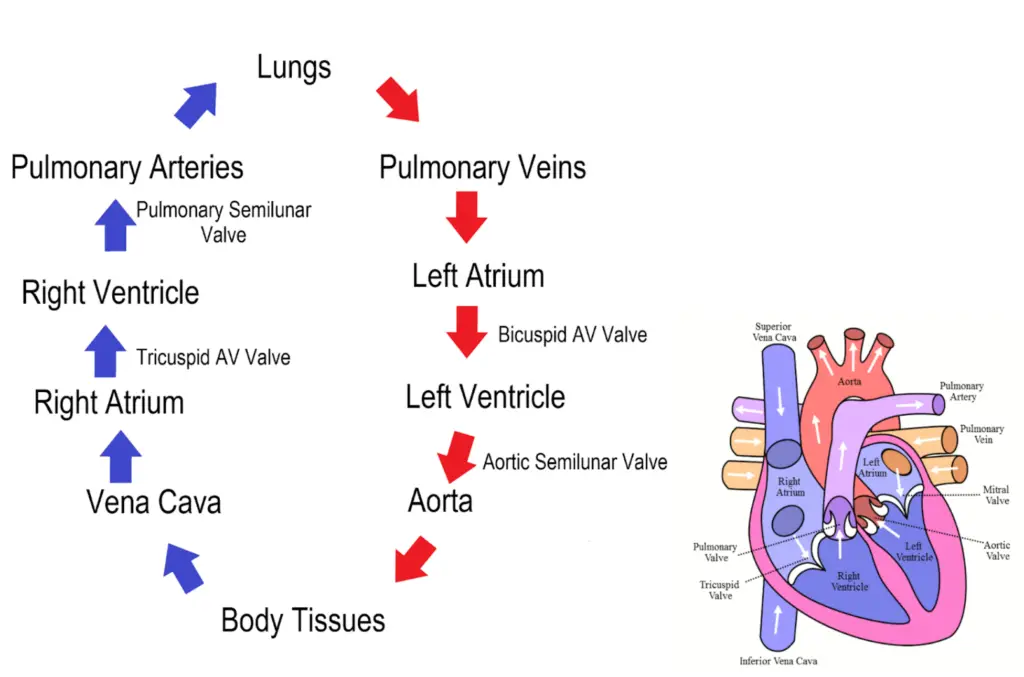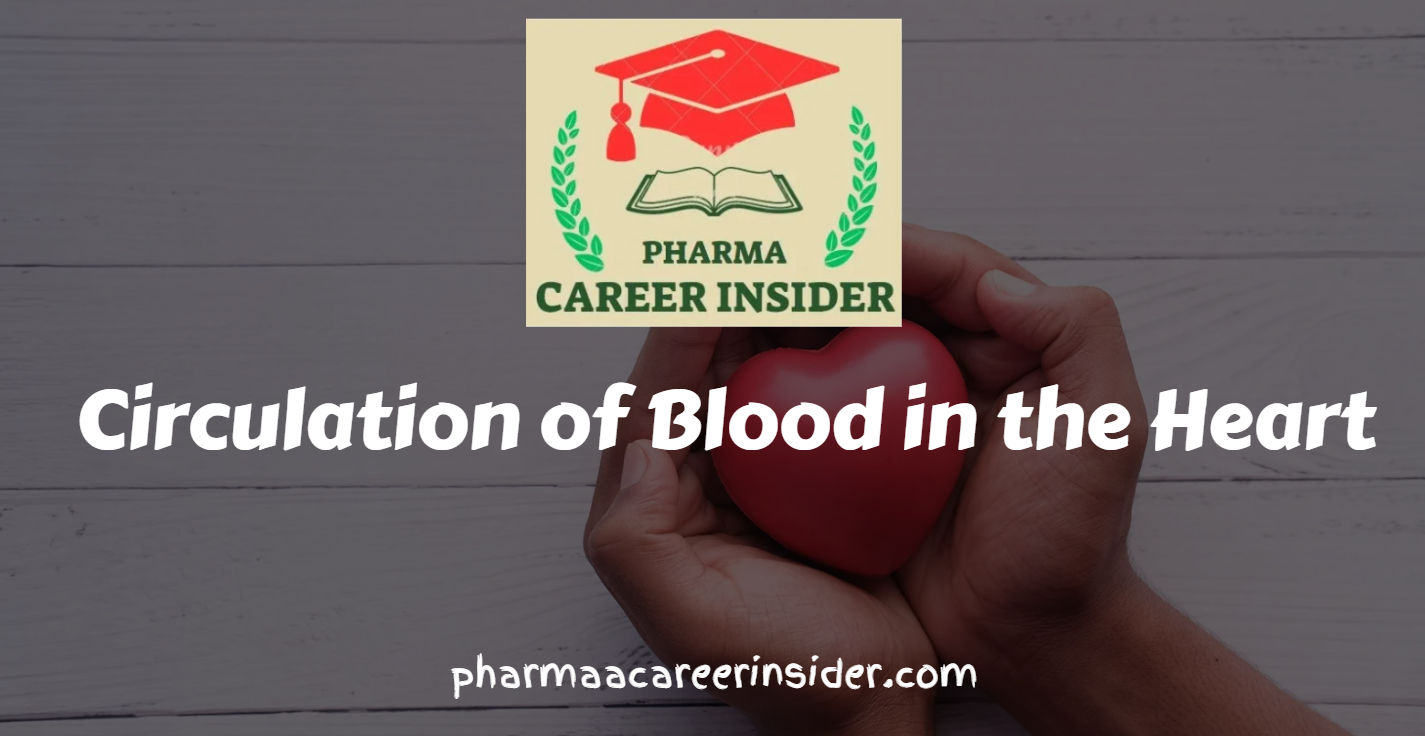Blood circulation in the heart involves a complex and highly regulated process that allows blood to move efficiently, delivering oxygen and nutrients to body tissues while removing waste products. The heart plays a central role in this process, pumping blood to the lungs for oxygenation and the rest of the body’s organs and tissues. Here is a detailed note on the circulation of blood in the heart:
1. Deoxygenated Blood Pathway
a. Superior and Inferior Vena Cava: Deoxygenated blood from the body returns to the heart through two large veins, the superior vena cava (which collects blood from the upper part of the body) and the inferior vena cava (which collects blood from the lower part of the body).
b. Right Atrium: The right atrium receives the deoxygenated blood from the vena cavae.
c. Tricuspid Valve: When the right atrium contracts, it pushes the deoxygenated blood through the tricuspid valve into the right ventricle.
d. Right Ventricle: The right ventricle contracts, pumping the deoxygenated blood into the pulmonary artery.

2. Pulmonary Circulation
a. Pulmonary Artery: The pulmonary artery carries the deoxygenated blood from the right ventricle to the lungs.
b. Lungs: In the lungs, the blood releases carbon dioxide and picks up oxygen, becoming oxygenated.
3. Oxygenated Blood Pathway
a. Pulmonary Veins: Oxygenated blood from the lungs returns to the heart through the pulmonary veins, entering the left atrium.
b. Left Atrium: The left atrium receives the oxygenated blood from the pulmonary veins.
c. Mitral (Bicuspid) Valve: When the left atrium contracts, it pushes the oxygenated blood through the mitral valve into the left ventricle.
d. Left Ventricle: The left ventricle, the most muscular chamber of the heart, contracts forcefully, pumping the oxygenated blood into the aorta.
4. Systemic Circulation
a. Aorta: The aorta is the body’s main artery. It carries oxygenated blood from the left ventricle to various arteries throughout the body.
b. Arteries: The aorta branches into smaller arteries that supply oxygenated blood to all tissues, organs, and cells.
c. Capillaries: Capillaries are tiny, thin-walled vessels that deliver oxygen and nutrients to cells and remove waste products.
d. Veins: Deoxygenated blood is collected in small veins, which merge into larger veins.
e. Superior and Inferior Vena Cava: Deoxygenated blood from the body returns to the right atrium through the superior and inferior vena cavae, completing the circulation cycle.


